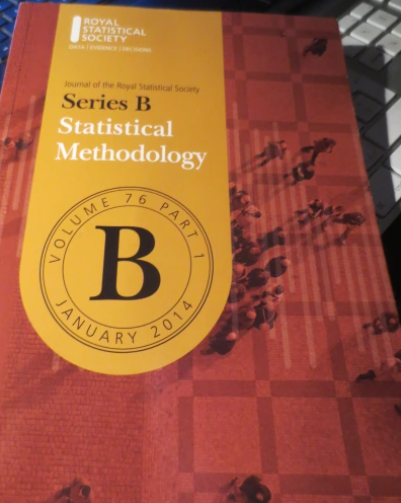Randomisation inference beyond the sharp null: bounded null hypotheses and quantiles of individual treatment effects
IF 3.6
1区 数学
Q1 STATISTICS & PROBABILITY
Journal of the Royal Statistical Society Series B-Statistical Methodology
Pub Date : 2023-08-19
DOI:10.1093/jrsssb/qkad080
引用次数: 0
Abstract
Abstract Randomisation inference (RI) is typically interpreted as testing Fisher’s ‘sharp’ null hypothesis that all unit-level effects are exactly zero. This hypothesis is often criticised as restrictive and implausible, making its rejection scientifically uninteresting. We show, however, that many randomisation tests are also valid for a ‘bounded’ null hypothesis under which the unit-level effects are all non-positive (or all non-negative) but are otherwise heterogeneous. In addition to being more plausible a priori, bounded nulls are closely related to substantively important concepts such as monotonicity and Pareto efficiency. Reinterpreting RI in this way expands the range of inferences possible in this framework. We show that exact confidence intervals for the maximum (or minimum) unit-level effect can be obtained by inverting tests for a sequence of bounded nulls. We also generalise RI to cover inference for quantiles of the individual effect distribution as well as for the proportion of individual effects larger (or smaller) than a given threshold. The proposed confidence intervals for all effect quantiles are simultaneously valid, in the sense that no correction for multiple analyses is required. In sum, our reinterpretation and generalisation provide a broader justification for randomisation tests and a basis for exact non-parametric inference for effect quantiles.超过尖锐零值的随机化推断:有界零假设和个体治疗效果的分位数
随机化推理(RI)通常被解释为检验Fisher的“尖锐”零假设,即所有单位级效应都是零。这一假设经常被批评为限制和不可信,使得它的拒绝在科学上无趣。然而,我们表明,许多随机化检验对于“有界”零假设也是有效的,在这种假设下,单位水平的效应都是非正的(或非负的),但在其他方面是异构的。除了更似是而非之外,有界零与单调性和帕累托效率等重要概念密切相关。以这种方式重新解释RI扩展了该框架中可能的推论范围。我们证明了最大(或最小)单位水平效应的精确置信区间可以通过对有界零序列的反检验获得。我们还将RI推广到涵盖个体效应分布的分位数以及大于(或小于)给定阈值的个体效应比例的推断。建议的所有影响分位数的置信区间同时有效,即不需要对多个分析进行校正。总之,我们的重新解释和概括为随机化测试提供了更广泛的理由,并为效果分位数的精确非参数推断奠定了基础。
本文章由计算机程序翻译,如有差异,请以英文原文为准。
求助全文
约1分钟内获得全文
求助全文
来源期刊
CiteScore
8.80
自引率
0.00%
发文量
83
审稿时长
>12 weeks
期刊介绍:
Series B (Statistical Methodology) aims to publish high quality papers on the methodological aspects of statistics and data science more broadly. The objective of papers should be to contribute to the understanding of statistical methodology and/or to develop and improve statistical methods; any mathematical theory should be directed towards these aims. The kinds of contribution considered include descriptions of new methods of collecting or analysing data, with the underlying theory, an indication of the scope of application and preferably a real example. Also considered are comparisons, critical evaluations and new applications of existing methods, contributions to probability theory which have a clear practical bearing (including the formulation and analysis of stochastic models), statistical computation or simulation where original methodology is involved and original contributions to the foundations of statistical science. Reviews of methodological techniques are also considered. A paper, even if correct and well presented, is likely to be rejected if it only presents straightforward special cases of previously published work, if it is of mathematical interest only, if it is too long in relation to the importance of the new material that it contains or if it is dominated by computations or simulations of a routine nature.

 求助内容:
求助内容: 应助结果提醒方式:
应助结果提醒方式:


